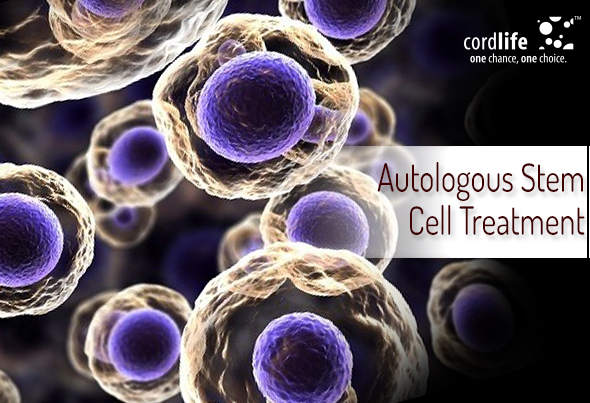Did you know that autologous stem cell transplant is being increasingly used with high-dose chemotherapy to treat lymphoma? The University Health Network, a clinical healthcare and medical research organization based in Toronto, has an in-patient guide[1] which can take you through the entire process of having the transplant. Autologous stem cell therapy is one of the three types of stem cell therapy. Others are: Allogeneic and Syngeneic. In Allogeneic treatment, stems cells are harvested from a donor while in the case of Syngeneic therapy stems cells are harvested from identical twin. Cryopreserved Cord blood stems cells can be used for autologous, allogenic or syngeneic stem cell transplants.
What is Autologous Stem Cell Treatment?
Autologous stem cell treatment is a stem cell transplant where previously cryopreserved stem cells of the patient are expanded outside the body and then returned (engrafted) to the body after the patient receives high dose of chemotherapy or radiotherapy. The growth factor G-CSF which is a protein that is produced naturally in the body may be used to stimulate the growth of new stem cells. The stems cells have the ability to develop into full range of blood and immune cells.
Autologous Stem Cell Therapy is done through peripheral blood stem cell transplantation (PBSCT). This process is more like dialysis where the blood is taken and passed through a machine that separates the stem cells and the rest of blood. The stem cells are then frozen while the rest of the blood is returned to the patient’s body through a needle in the person’s arm or through a central venous catheter. In adults, the stem cells are taken from blood while in a child the decision whether to use cells from bone marrow or blood depends on the size of the child.
One of the major advantages of autologous stem cell transplant is that it minimizes the risk of rejection by the body as well as that of auto-immune diseases.
How is this Treatment Helpful?
This therapy is used to treat a number of different cancers, including, leukaemias, myelodysplastic syndrome, multiple myeloma, Hodgkin’s disease, non-Hodgkin lymphoma, testicular cancer and neuroblastoma.
Stem cell transplant may sometimes be necessary in lymphoma patients especially after high-dose chemotherapy. The chemotherapy can damage or kill the vital cells of the bone marrow. Autologous stem cell therapy helps to restore bone marrow function.
This therapy can decrease the risk of recurrence of disease and/or cure aggressive component of the disease. It also produces a durable remission. The down-side however, is that the engrafted cells may have already been contaminated with disease. The success rate of treatment depends on the stage of the diseases as well as the size of the tumor.
[1]http://www.uhn.ca/PatientsFamilies/Health_Information/Health_Topics/Documents/Your_Guide_In-patient_Autologous_Stem_Cell_Transplant.pdf
